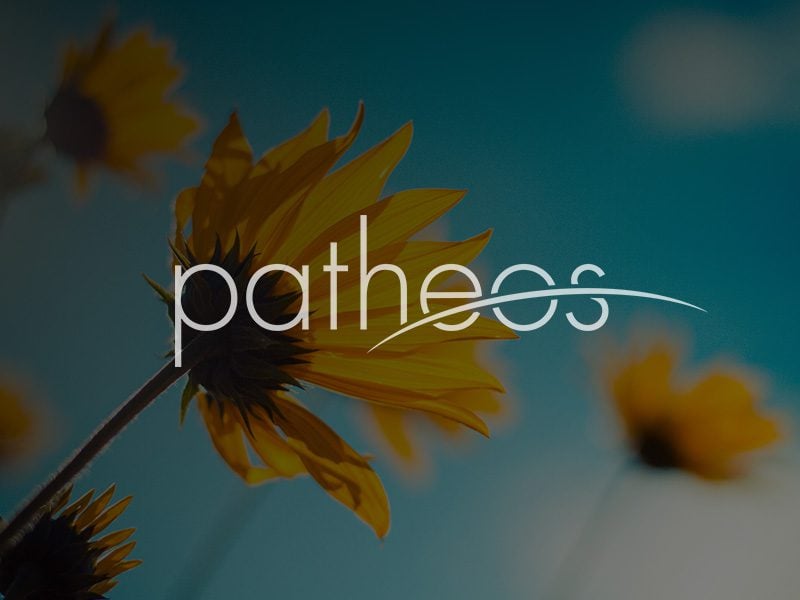In the early 1970s I wrote a series of “Flying Scrolls” (as they were called in the Hermetic Order of the Golden Dawn) for internal use in the New Reformed Orthodox Order of the Golden Dawn. I chose to call them Aporrhetons, because the Greeks separated the secrets of the Eleusinian Mysteries into two classes: the Arrheta “inexpressible,” which could be known only by experiencing them and which therefore needed no protection by a mere human law; and the Aporrheta, the “not to be spoken,” that which could, and therefore must not be, communicated by words or deeds to the uninitiated.
Of those scrolls, this fifth one has gained a certain notoriety, lately posted on websites and sometimes attributed to the wrong person. It is also more than 40 years later. There is still useful substance in it, but it needs to be updated in light of further experience, facts, and some maturation. Hence I offer this rewriting of it.
The document in the Gardnerian Book of Shadows known variously as the “Old Laws,” the”Craft Laws,” or the “Ardanes” was first published in 1971 in Lady Sheba’s Book of Shadows and in June Johns’ King of the Witches. Gerald Gardner wrote them in 1959, but knowing when and how something was written does not explain its contents. Many people are willing to believe that humans can be inspired to write more than they consciously know. I am willing to believe that funny Old Gerald was occasionally inspired also.
Many of the 161 (or so) Laws in the Ardanes are merely definitions of what the Craft is and thus of the context in which they should all be understood; they need be only internally consistent. In contrast, others of these Laws appear to be observations about how magic and/or psychic energy seems to work. In the discussions in this document, I am folding in information about psychic phenomena and abilities gained in other contexts.
The psychic reality that these Laws concern has been called by many names. Any name is an attempt to map (part of) that reality, which seems all too willing to accommodate itself to any map you use. You need to keep its plasticity firmly in mind, for it is a corollary of the fact that the Gods have no pride; they will come no matter what name you call them—as long as you sincerely need them.
I chose in the 1960s to conceptualize this reality as the Goddess, a concept that had fascinated me ever since I discovered the myth of Aradia when I was 14. Many others in the Craft have chosen to do so also. I believe she is very real, but She is also a metaphor, because, great though She may be, our concept of Her is finite, like any other human concept, whereas reality is infinite. We need maps and metaphors because we cannot grasp an undifferentiated infinity. By creating our own concepts of divinity, we create mental steps for ourselves, up which we can mount, toward realizing ourselves as divine. On the other hand, the Gods often choose to manifest in specific forms as a way to communicate with us. Those forms are real, but they are never the whole story. If you cannot be at least open to the possibility that the Gods exist independently of whether human exist or not, then the Gods cannot help you. Your inability becomes a self-fulfilling prophecy.
The following “laws” are not “Commandments” from on high. Instead, think of them as hypotheses about how some psychic reality seems to work. They should be treated like any other hypotheses: respected as being the best guesses going, but continually tested to find out how valid they are and to generate better guesses. You cannot safely test the law of gravity by jumping off a 13-story building. Instead of just breaking these laws, draw conclusions from them, or base predictions on them, and try workings to see if the latter hold up. The “laws” included here held up under such testing; some others did not. Some of these laws are descriptive, like the Law of Gravity, others prescriptive, like “Don’t do that; you’ll hurt yourself.”.
When at age 19 I discovered the Tarot, I decided to approach such symbolic systems neither gullibly or with closedminded skepticism, but instead supposing that they might be a terse, multileveled coding of hard-earned information about something real and important. The only way to find out what such a system means is to work with it until you speak its language fluently. Then you will likely find (at least, this has been my experience) that the system gives you a map of reality, but of many places, not just one place, that it gives you a way to work with classes of relationships that hold for many different kinds of people, things, and situations. A symbol in one of them is not going to have an invariant and simple meaning, or even the same meaning, in two different contexts, any more than x is going to have the same numerical value in two different algebra problems. Later I learned about Paul Ricouer’s observation that you cannot understand the scriptures of a different faith community if you approach them already assuming that they are wrong. Instead, you must read them open to the possibility that what you read might change you forever. I’ve had that happen several times.
If the meanings of any of these “laws” are not obvious, hope that further experimentation will shed some light on them. To get any results at all in dealing with psychic phenomena, you have to be optimistic and openminded. If you already hold a firm belief that you know everything that they mean, or that they are “Absolutely True” or the opposite, then your mind is closed, and you can’t learn anything new. Belief is not necessary, but openmindness can lead to understanding.
So here follow some “Laws” for your consideration.
1. YOU CANNOT USE THE ARTS OF THE CRAFT TO CREATE OR INCREASE BAD KARMA, EXCEPT FOR YOURSELF.
2. YOU MAY NOT USE THE ARTS OF THE CRAFT TO AFFECT ANOTHER PERSON IN ANY WAY, UNLESS YOU HAVE THAT PERSON’S EXPLICIT PERMISSION.
These two are replace the inadequate statement that “You may not use the arts of the Craft to work malevolent magic.” Notice that the first one says “cannot,” being an observation of fact, whereas the second says “may not,” being a statement of ethics.
In the long run, you cannot benefit from trying to harm another, because you are part of the fabric of reality, not separate from it. You get whatever you give, because getting and giving are the same, just as the trough and the crest are the same wave. If you set up a pattern of nasty, callous selfishness around yourself, that is what you have projected onto the world, and that is all you will experience. If you act out of genuine affection and concern for others, you receive their affection and concern as well. The psychic (or life) field seems to have a single polarity: to create positive effects for yourself, you must create positive effects for others. This observation applies not just to the arts of the Craft, not just to all the psychic arts, but to life in general. Also, you may not shed blood, except your own.
The second law, as originally formulated by Glenn Turner, says that the other person’s opinion determines whether the effects of what you do are positive or not. This version of the “Golden Rule” says, “Do unto others not as you wish to be done unto, but as they wish to be done unto—for their tastes may damned well differ from yours.” (Thus this law, most usefully, eliminates any arguments over how one defines “good” or “evil.”) In other words, you may not do something for what you think is someone else’s “own good”; you have no right to make that decision. You may not work a healing unless you have permission from that person to be healed; it is unethical to hit an unprepared person with a jolt of energy. You may work without prior permission for those you are already personally involved with (as a mother for her child, a man for his wife, etc.), but you may not accept an opinion that another would give permission if asked, unless you are certain that the two people concerned are genuinely committed to caring for each other.
[More tomorrow]











